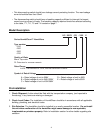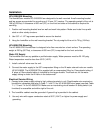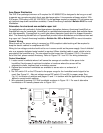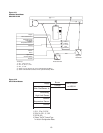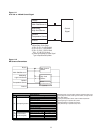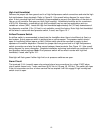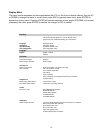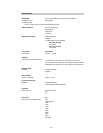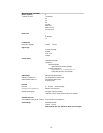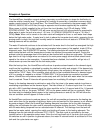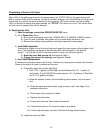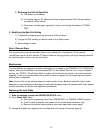High Limit Humidistat
Remove the jumper tab from ground and in of high limit/pressure switch connections and wire the high
limit stat between these terminals. Refer to Figure10-1 (the overall wiring diagram) for more inform
ation. A duct mounted high limit humidistat is recommended to prevent over-saturation of the duct air.
Use an on-off controller that opens on fault (high humidity). Humidistat should be set for a maximum
of 90% RH. Alternately, a modulating high limit humidistat may be used on applications such as
variable air volume (VAV). Locate the high limit humidistat approximately 3m (10 feet) downstream of
the dispersion manifold. If 3m (10 feet) is not available, consult the factory. Note: High limit humidistat
will be wired in series with duct pressure switch, if used, see Figure 10-1.
Airflow/Pressure Switch
An airflow switch is recommended to deactivate the humidifier when there is insufficient air flow in a
duct system. A duct pressure switch is preferred as an airflow sensor. The pressure switch should
open on insufficient airflow (opens on fault). Airflow switch should be mounted in supply air duct
upstream of humidifier dispersion. Remove the jumper tab from ground and in of high limit/pressure
switch connections and wire the airflow sensor between these terminals. See Figure 10-1 (the overall
wiring diagram) for more information. Complete installation and wiring instructions are contained in the
duct pressure switch package. Note: Duct pressure switch will be wired in series with high limit
humidistat, if used, see Figure 10-1.
State light will flash green if either high limit or air pressure switches are open.
Alarm Circuit
The terminals 3 & 4 (normally open relay external alarm) are connections for a class II NEC alarm
circuit (switch closure only, 1 amp. maximum @ 24 Vdc or 0.5 amp. @ 125 Vac). The switch will close
if the unit encounters an error or when service life has expired it will not engage if high humidity/sail
switch circuit is open.
12



